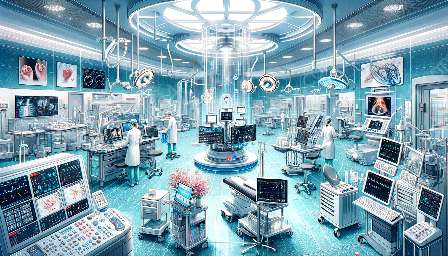With the rapid advancements in bioengineering, there is a growing potential for the development of bioartificial organs. Bioengineering principles offer innovative solutions for creating functional and long-lasting bioartificial organs, which can significantly impact the field of medical devices. This article will delve into the application of bioengineering principles in the development of bioartificial organs, highlighting the potential and future possibilities in this exciting area of research and development.
Bioengineering Principles in Bioartificial Organ Development
Bioengineering principles encompass a wide range of interdisciplinary fields, including biology, engineering, and medical science. These principles are essential in the design and fabrication of bioartificial organs that mimic the structure and function of natural organs. One of the key aspects of bioengineering principles in bioartificial organ development is the utilization of biomaterials. Biomaterials play a crucial role in providing structural support and promoting tissue regeneration within the bioartificial organs.
Tissue Engineering and Regenerative Medicine
Tissue engineering and regenerative medicine are at the forefront of bioengineering principles applied to bioartificial organ development. These fields focus on the development of biomimetic scaffolds, cellular therapies, and growth factors to promote the regeneration of functional tissues within bioartificial organs. By leveraging tissue engineering and regenerative medicine principles, bioengineers can create bioartificial organs with enhanced biocompatibility and regenerative capabilities, leading to improved long-term performance.
Biomechanical Considerations
Another critical aspect of bioengineering principles in bioartificial organ development is the consideration of biomechanics. Natural organs exhibit complex biomechanical properties that are essential for their proper function. Bioengineers apply biomechanical principles to design bioartificial organs that can withstand physiological forces, maintain structural integrity, and exhibit dynamic functionalities similar to their natural counterparts.
Advanced Manufacturing Techniques
Advancements in bioengineering have led to the development of sophisticated manufacturing techniques that are instrumental in creating bioartificial organs. Additive manufacturing, also known as 3D printing, has revolutionized the fabrication of complex geometries and patient-specific bioartificial organs. This precise and customizable manufacturing process enables the incorporation of multiple materials and cell types, offering unprecedented control over the design and composition of bioartificial organs.
Biofunctionalization and Integration
Biofunctionalization involves modifying the surfaces of bioartificial organs to enhance their interaction with host tissues and biological systems. Bioengineering principles guide the biofunctionalization process, ensuring that bioartificial organs promote cellular adhesion, minimize immune responses, and facilitate physiological integration within the recipient's body. By integrating biofunctionalization strategies, bioengineers can enhance the overall performance and longevity of bioartificial organs.
Challenges and Future Prospects
While bioengineering principles offer tremendous potential for the development of bioartificial organs, several challenges exist in translating these principles into clinically viable medical devices. Overcoming immune rejection, achieving vascularization, and ensuring long-term functionality are some of the key hurdles that bioengineers continue to address. However, ongoing research and collaborations between bioengineers, clinicians, and material scientists hold promise for overcoming these challenges and advancing the field of bioartificial organ development.
Looking ahead, the future prospects of bioengineering in bioartificial organ development are filled with exciting possibilities. As bioengineers delve deeper into understanding the complexities of biological systems and harnessing the latest technological innovations, the creation of bioartificial organs with improved functionality, biocompatibility, and integration into the human body is on the horizon. The convergence of bioengineering and medical devices is poised to revolutionize the landscape of organ replacement therapies, offering hope to countless individuals in need of life-saving interventions.


